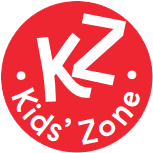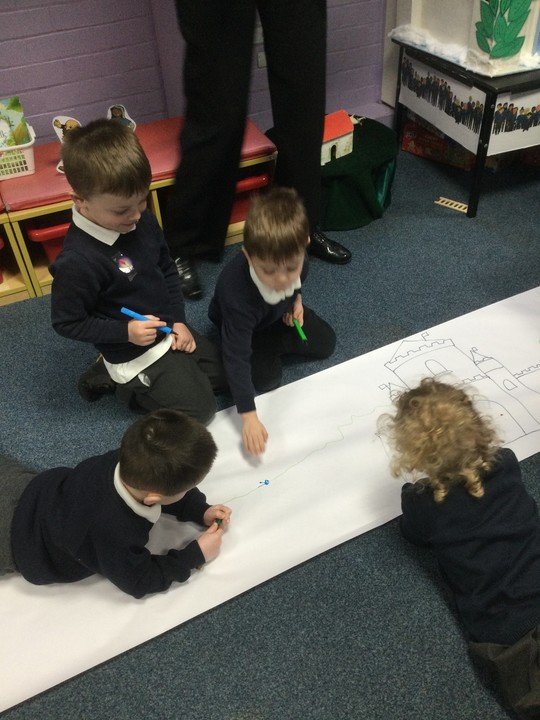Early Writing
The way in which children learn to write is equally as important as learning to read... and this too must start from the earliest possible age.
Believe it or not, early writing begins when children are babies! The way in which babies effectively 'grab' onto objects such as toys, fingers and your hair all helps. Eventually they learn to crawl or move around using their arms to help them, this helps to build muscle strength in their arms and hands. By taking the children to the park and allowing them to play on climbing frames and other structures will help to develop their gross motor skills and their strength. Playing with toys that they have to pick up between their thumb, index and second fingers using the pincer grip will always help as will doing things like playing with dough and moulding clay.
When children do pick up a pen, pencil, crayon, paint brush or chalk eventually and wish to make marks with it, this should be wholeheartedly encouraged and praised. Eventually you might even be able to adjust how they hold onto that writing implement to develop a good pincer grip...doing this early but positively will help later on.
Please always remember - children will begin to enjoy mark making in their own good time but they do like to join in with what you are doing and they will copy your movements - you are their biggest influence! Ask the children to tell you about what they have written - they might be writing a story that they can re-tell to you.
If you would like to help your child to learn to write their name before they come to school, wonderful! We do teach letter formation in a very specific way which will eventually help them to join their letters. Please see our handwriting and phonics sections to help and support you with this.
The Message Centre
Within Early Years we are exploring the Message Centre as a way of encouraging early writing at Morley Victoria. Children need to feel three things when they write and mark make: joy, purpose and magic. The Message Centre delivers all three of these in bucketloads. A simple rebrand of writing, messaging offers both children and adults a delight in what might otherwise be a struggle. When messaging takes off, the phrase ‘reluctant writers’ goes out the window! Children want to message – they love its simplicity and its warmth. There is always excitement in the room when children are writing and talking about their messages and the creativity and imagination coming from the children has been amazing!
Drawing Club
In Reception, we have introduced Drawing Club. Drawing Club incorporates story sharing, speaking and listening, drawing, writing, vocabulary, mathematics, imagination and collaboration. Each week we have a focus story or animation. The children learn new vocabulary linked to the story or animation and are invited to Drawing Club, where they may draw a character, setting or event. They can innovate their drawings and add secret passwords, magic powers or spells, hidden symbols, letters or numerals. At the start of reception, the sessions may be purely drawings based but this will progress on throughout the year to labelling their drawings with initial sounds, CVC words and eventually writing sentences about their drawings.
The children love coming to Drawing Club!
The Early Writing Process in a nutshell:
Children start by drawing freely, this maybe a repeated movement.
- They then go on to give meanings to marks they make by being able to say what it is they have drawn eg “This is a treasure map.”
- They might start to make marks that stand for their name.
- They then use some of their print and letter knowledge in their early writing.
- They then start to form some recognisable letters.
- They learn how to form lower case and capital letters correctly.
- Learn to spell words by identifying the sounds and then writing the sound with a letter or letters.
- Write short sentences with words with known sound-letter correspondences using a capital letter and full stop, that can be read by others.
- Re-read what they have written to check that it makes sense.
How can we help children with their mark making?
We must provide a wide range of stimulating equipment to encourage children’s mark-making.
- Large-scale sensory play, such as making marks with fingers in wet sand or in a tray of flour.
- Using sticks and leaves to make marks.
- Large brushes with paint or water.
- Dragging streamers through puddles.
Once large-muscle co-ordination is developing well, children can develop small-muscle coordination.
- Playground chalk, smaller brushes, pencils and felt pens will support this.
- children love coloured paper and paper decorated with fancy frames.
Motivate children to write by providing opportunities in a wide range of ways.
- Clipboards outdoors, chalks for paving stones, boards and notepads in the home corner.
- Children enjoy having a range of pencils, crayons, chalks and pens to choose from.
- Apps on tablets enable children to mix marks, photos and video to express meanings and tell their own stories.
- Children are also motivated by simple home-made books, different coloured paper and paper decorated with fancy frames.
- Use water and paint brushes - they love that!
How do we teach more formal writing methods?
We must help children to learn to form their letters accurately. First, they need a wide-ranging programme of physical skills development, inside and outdoors. Include large-muscle co-ordination: whole body, leg, arm and foot. This can be through climbing, swinging, messy play and parachute games, etc. Plan for small muscle co-ordination: hands and fingers. This can be through using scissors, learning to sew, eating with cutlery, using small brushes for painting and pencils for drawing. Children also need to know the language of direction (‘up’, ‘down’, ‘round’, ‘back’, etc)
Teach formation as they learn the sounds for each letter using a memorable phrase, encouraging an effective pen grip. When forming letters, the starting point and direction are more important at this stage than the size or position of the letter on a line.
- Show children how to touch each finger as they say each sound.
- For exception words such as ‘the’ and ‘said’, help children identify the sound that is tricky to spell.
- Support children to form the complete sentence orally before writing.
- Help children memorise the sentence before writing by repeatedly saying it aloud.
- Only ask children to write sentences when they have sufficient knowledge of letter-sound correspondences.
- Dictate sentences to ensure they contain only the taught sound-letter correspondences.
- Model how you read and re-read your own writing to check it makes sense.
































